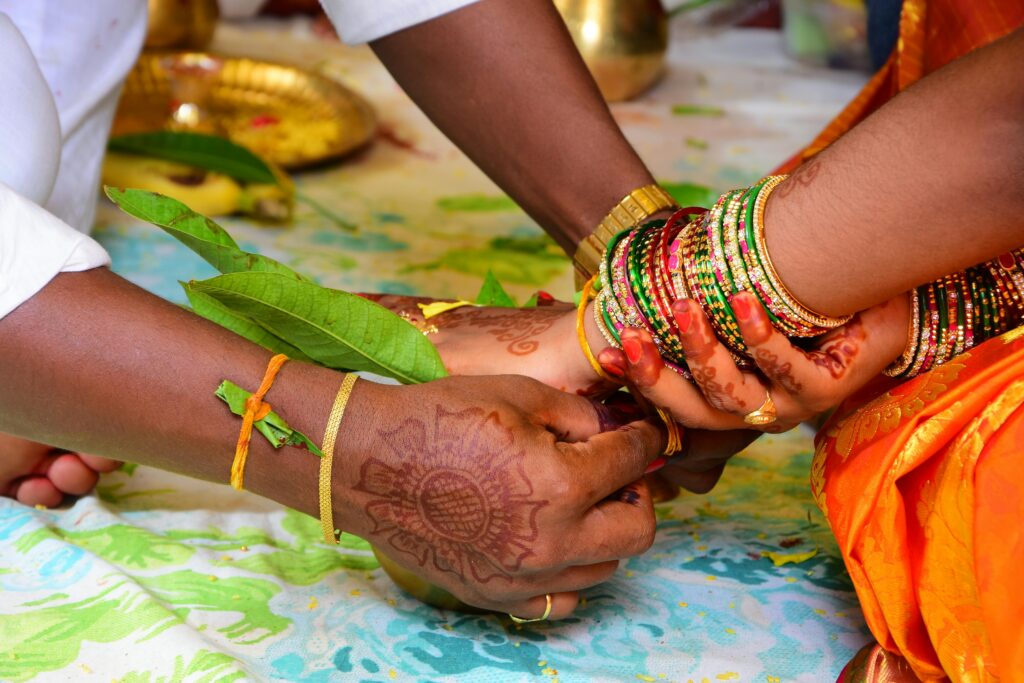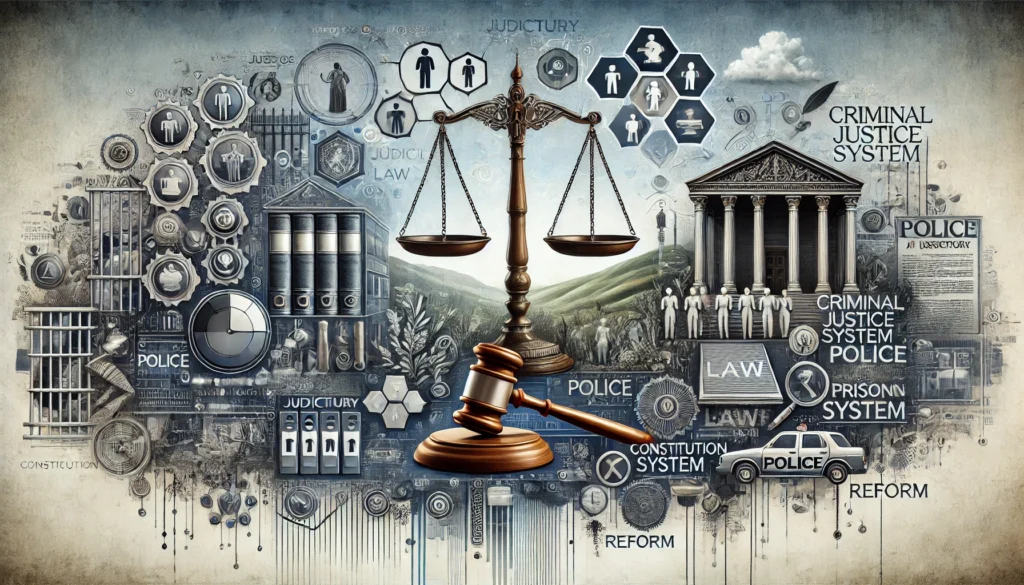Published on 16th August 2025
Authored By: Sneha Verma
New Law College, Bharati Vidyapeeth University, Pune
Abstract
This article looks at how Victimology is reshaping how we think about justice in India not just as a tool to punish offenders, but as a means to support, heal, and empower those who suffer harm. This article explores the growing recognition of victims’ rights, from early neglect to recent efforts. It also examines protections tailored for women, children, and marginalized communities.
Despite the progress in law, many victims still find it hard to report crimes, endure further trauma during court proceedings, and often receive little or no compensation for their suffering. Through real case law and practical analysis, this article highlights these gaps and calls for a justice system that listens to victims, respects their dignity, and ensures their meaningful participation. By promoting reforms like victim impact statements and trauma-sensitive procedures, India can move closer to a truly victim-centric approach—one that delivers not just punishment, but compassion and closure.
Introduction
In India’s criminal justice system, the victim often remains the most neglected voice. While the State takes charge of prosecution and the accused is ensured legal protection, the victim the one who has suffered the most is frequently reduced to a bystander, expected to cooperate but rarely empowered.
This led Victimology a field that puts victims’ rights, pain, and voices. It raises vital questions: Do the police and courts treat victims with respect and dignity? Are they kept safe, informed, and compensated? Or do they face further trauma through delays, stigma, and a system that forgets them?
Victimology shifts the focus from punishment alone to healing, justice, and recognition. It insists that victims deserve not just a voice in the process but a meaningful place at its heart.
Evolution of Victimology in India
The evolution of victimology in India has moved from neglect to gradual recognition. Historically, Indian criminal law focused on retributive justice. The colonial-era Indian Penal Code of 1860 focused mainly on state authority and punishment, often sidelining the experiences and rights of the victim. Victimology emerged as a corrective, advocating for a justice system that balances offender accountability with victim reparation and rehabilitation. Global frameworks such as the UN Declaration of Basic Principles of Justice for Victims of Crime and Abuse of Power (1985) laid the foundation for many national reforms.
- General Classifications of Victims’ Rights
- Right to be treated with self-respect
- Right to notification
- Right to be present
- Right to be heard
- Right to rational protection from terrorization and injury
- Right to restitution
- Right to information
- Right to compensation
- Right to speedy proceedings
- Right to privacy
Victim’s Rights under The Bharatiya Nagarik Suraksha Sanhita, 2023
- Right to Access Justice
In Section 154 and Section 156(3) of BNSS mandates police to register an FIR in every cognizable offence which empowers the victim to turn to a magistrate. In Lalita Kumari v Government of Uttar Pradesh, the Supreme Court held that FIR registration is mandatory in cognizable cases and delays can’t be justified by preliminary inquiries.
- Right to Be Heard
Section 301 allow BNSS them to assist the prosecutor; Section 302 permits them to conduct prosecution directly with the court’s permission.
- Right to Compensation
Under Section 357(3) of the BNSS, courts have the power to grant compensation to victims for their loss or injury even when no fine is imposed on the offender offering a measure of justice and support beyond punishment alone. Compensation serves not only as financial relief but also as an acknowledgment of the harm suffered by the victim.
Case example- Harikishan & State of Haryana v Sukhbir Singh, the Supreme Court awarded compensation, calling for more proactive and victim-sensitive judicial practices.
- For the first time, Section 398 BNSS introduces a codified Witness Protection Scheme, building on the Supreme Court’s directives in Mahender Chawla v Union of India, where the need for a legally binding and uniform witness protection mechanism was recognized.
Institutional Mechanisms for Victim Support
Legal Services Authorities
Under the Legal Services Authorities Act, 1987, victims belonging to vulnerable sections such as women, children, SC/STs, and economically weaker groups are entitled to free legal aid. These authorities, functioning at the national, state, district, and taluka levels, provide victims with: Legal representation in court, Assistance in filing FIRs and compensation claims, Access to mediation and counselling.
Case Example: In State of Maharashtra v. Manubhai Pragaji Vashi, the Supreme Court emphasized the State’s obligation to provide legal aid. Legal aid is not charity it’s a constitutional guarantee that ensures no victim is denied justice due to poverty or marginalization.
- One-Stop Centres (OSCs)
Introduced under the Ministry of Women and Child Development in 2015, One-Stop Centres (Sakhi Centres) provide holistic, survivor-centered care for women facing violence.
These centres offer:
Legal aid,
Medical care,
Temporary shelter,
Police assistance,
Psychological counselling all under one roof, 24/7.
After Nirbhaya case (2012), the need for support services became painfully clear. OSCs were developed to ensure that survivors are treated with dignity, empathy, and urgency, not scepticism or delay.
Although hundreds of OSCs now exist, challenges such as staff shortages and rural outreach persist.
- National and State Human Rights Commissions
Victims can file complaints directly to these commissions, which can: Order inquiries, recommend disciplinary action or compensation, Monitor compliance with human rights obligations.
Case Example: In the Gautam Navlakha case (2021), the NHRC took up concerns about custodial right and procedural fairness showing how these bodies can amplify victims’ voices when state agencies fail. These mechanisms remind us that justice is not just about punishing offenders it is about restoring dignity, healing trauma, and rebuilding trust in the system for the people it should protect most: the victims.
Recent Laws to Protect Special Categories of Victims
India has increasingly recognized that certain community’s women, children, and SC/ST persons face unique vulnerabilities and require tailored legal protections. The following legislations embed victim rights directly into their procedural and remedial structures.
- Protection of Women from Domestic Violence Act, 2005 (PWDVA)
The PWDVA acknowledges this reality by giving abused women civil remedies that are immediate and empowering. It allows women to remain in their homes safely, claim maintenance, and seek protection orders without having to wait for a criminal conviction.
In Hiral P. Harsora v. Kusum Narottamdas Harsora, the Supreme Court took an important step forward by acknowledging a harsh reality: domestic violence isn’t always confined to just husbands. It can come from any adult male in the household, and victims deserve protection no matter who the abuser is. The Court struck down the narrow definition of “respondent,” broadening the umbrella of protection for women within the household.
This law also enables women to access shelter homes, legal aid, and counselling resources that victims often desperately need, but struggle to find.
- Scheduled Castes and Scheduled Tribes (Prevention of Atrocities) Act, 1989
The Atrocities Act doesn’t just punish the offenders it aims to break the silence, fear, and procedural hurdles that victims face.
It provides for:
Special courts for swift justice,
Compensation even during the trial stage,
Protection of victims and their families from retaliation.
Case: In Subhash Kashinath Mahajan v State of Maharashtra, the Supreme Court initially weakened the arrest provisions, fearing misuse. But this sparked nationwide protests by Dalit groups, leading to a constitutional review and restoration of protections a reminder that victims’ voices can drive legal reform.
- Juvenile Justice (Care and Protection of Children) Act, 2015
Children especially those abused or abandoned face a justice system that is often too complex and intimidating for their age. The Juvenile Justice Act ensures that child victims are not retraumatized by the system meant to protect them.
This law mandates:
Child-friendly courts, where judges and lawyers avoid harsh language or intimidating settings,
Access to rehabilitation, psychological care, and safe shelter.
The Act treats children not just as passive recipients of care, but as individuals whose dignity, voice, and healing must be prioritized.
Shortcomings and Challenges
Despite notable legal progress, victims in India still face multiple roadblocks that hinder justice and healing. These challenges are both systemic and procedural, affecting the victim’s ability to participate, be protected, and be heard.
- Underreporting of Crimes
A large number of victims especially of rape, domestic violence, or caste-based atrocities remain silent due to social stigma, fear of retaliation, or lack of trust in law enforcement. Many women, children, and marginalized groups hesitate to come forward, fearing character assassination or inaction.
Example: The Nirbhaya case (2012) brought national attention to the trauma survivors face and exposed the broader societal silence around sexual violence. It prompted significant legislative reforms, including the 2013 Criminal Law Amendment.
- Inadequate and Uneven Compensation
Though Section 357 and 357A CrPC authorize compensation, many Victim Compensation Schemes (VCS) are plagued by delays, lack of awareness, and bureaucratic hurdles. There’s no uniform standard across states, leading to wide disparities in both process and payment.
In Ankush Shivaji Gaikwad v State of Maharashtra, the Supreme Court affirmed that compensation is a legal right, not a benevolent gesture, and must be applied even when no fine is imposed.
- Revictimization During Trial
Victims often experience trauma in court through repetitive depositions, insensitive cross-examination, and lack of privacy.
Case Law: In Tukaram v State of Maharashtra, popularly known as the Mathura rape case—the Supreme Court acquitted two police officers on questionable reasoning about consent. The verdict sparked nationwide protests and led to key changes in rape laws, including:
Section 114A of the Indian Evidence Act plays a vital role in custodial rape cases by presuming that the victim did not give consent if she says so placing the responsibility on the accused to prove otherwise.
- Delays and Psychological Neglect
Even where the law offers relief, justice is often delayed. With courts stretched thin and agencies failing to work in sync, victims are often left without information, guidance, or support throughout their legal journey. In Laxmi v. Union of India, The Supreme Court highlighted the pressing need for stricter control over acid sales and immediate support for survivors through rehabilitation and compensation. However, the implementation of these safeguards continues to fall short in practice.
Recommendations for Reform: Building a Victim-Centric Justice System
Justice becomes meaningful only when victims are placed at the core of legal reforms. Below are key reforms that could help bridge this gap.
- Victim Impact Statements
Officially recognizing Victim Impact Statements during sentencing would give victims the chance to be heard and allow judges to see the deeper, personal effects of the crime before deciding the punishment.
- Victim Ombudsman
Appoint an independent Victim Rights Commissioner to ensure accountability and redress grievances in victim services.
- Uniform Compensation Guidelines
Set nationwide minimum standards for victim compensation to ensure fairness and consistency so that a victim’s support doesn’t depend on where they live.
- Psychosocial Support Units
Set up trained support staff in every police station and court to assist victims, especially in sexual and violent crimes.
- Sensitization of Authorities
Mandatory training for police, prosecutors, and judges on trauma-informed practices and respectful victim engagement.
- Use of Technology
Create centralized digital portals where victims can track case progress, apply for compensation, and report official misconduct.
Conclusion
Even today, victims in India often feel like outsiders in their own pursuit of justice. While laws have evolved and protections have been introduced, these promises too often remain locked in statutes unfelt and unseen by those who need them most. Victims endure more than just the trauma of the crime they often face silence, long delays, and a system that looks the other way. True justice can’t exist if we continue to focus only on the rights of the accused while treating victims as if their suffering doesn’t matter. A shift is needed from a system that simply punishes to one that also heals. When victims are heard, supported, and protected, justice becomes more than a verdict it becomes a process of restoration. Putting victims at the heart of the criminal justice process is not a matter of charity or convenience. A justice system that uplifts its victims is one that inspires trust, dignity, and true accountability. And that is the kind of justice India must strive for.
References
- Lalita Kumari v Government of Uttar Pradesh (2014) 2 SCC 1 (SC).
- Harikishan & State of Haryana v Sukhbir Singh (1988) 4 SCC 551 (SC).
- Mahender Chawla v Union of India (2019) 14 SCC 615 (SC).
- State of Maharashtra v Manubhai Pragaji Vashi (1995) 5 SCC 730 (SC).
- Hiral P Harsora v Kusum Narottamdas Harsora (2016) 10 SCC 165 (SC).
- Subhash Kashinath Mahajan v State of Maharashtra (2018) 6 SCC 454 (SC).
- Ankush Shivaji Gaikwad v State of Maharashtra (2013) 6 SCC 770 (SC).
- Tukaram v State of Maharashtra (1979) 2 SCC 143 (SC) (Mathura rape case).
- Laxmi v Union of India (2014) 4 SCC 427 (SC).
- Gautam Navlakha v National Investigation Agency, (2021) SCC OnLine SC 382.
- Bharatiya Nagarik Suraksha Sanhita 2023
- Protection of Women from Domestic Violence Act 2005.
- Scheduled Castes and the Scheduled Tribes (Prevention of Atrocities) Act 1989.
- Juvenile Justice (Care and Protection of Children) Act 2015.
- Ministry of Women and Child Development, Government of India, One-Stop Centre Scheme Guidelines, 2015.



